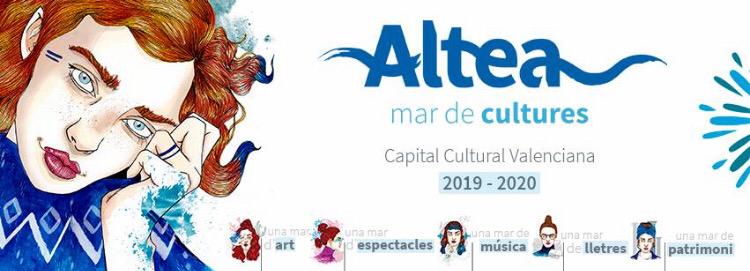- The proposed Altea has been selected to provide a comprehensive and quality programming, with the support of major cultural events, facilities and a wide range of leisure and tourism
Culture of the Generalitat Valencian cultural capitals determined that between 25 April 2019 and 25 April 2020 will be Altea and Villefranche. It was decided that the evaluation committee has selected. For the second consecutive year two municipalities have been designated with this distinction, one of more than 5,000 and less than 5,000 inhabitants.
According to the Minister Vicente March, “a recognition as this is necessary and it is because culture is at the center of the backbone of our region.” In addition, the holder of Education and Culture added that this year “we have a cultural capital of the south and north to sew our cultural diversity and promote.”
Altea The project has been selected as a cultural capital for 2019/2020 Valencian town of 5,000 inhabitants with a comprehensive quality program, which includes various aspects of art and culture such as the arts, music, shows and performing arts, literature and heritage. A program that has as theme the Mediterranean Sea and its relationship with the municipality and the region of Marina Baixa.
In addition, we have taken into account the large number of events, festivals and prizes consolidated taking place in Altea, as well as lots of spaces and facilities and its model has great complementary offer of leisure and tourism. Also noteworthy is the effort made in the development of graphic and conceptual to disseminate and communicate effectively the project.
Moreover, Villafranca has been recognized as a Cultural Capital for 2019/2020 Valencian town of less than 5,000 inhabitants. The project of this northern town in the province of Castellon, highlighted by a cultural offer which has the largest share of the municipality associations and other collaborating entities. Thus, much of the population participates in the preparation of the quarterly schedules containing all active cultural programming, sports, education and training, thereby participatory approach cultural, interdisciplinary and intergenerational.
It has also valued the attention that makes the project its educational aspect. It emphasizes the close link between culture, education and art in their training and working with the school and the school of the municipality with the aim of promoting art and culture among students.
It also highlights the rich fauna of the area and its gastronomy. Notably Villafranca has also been one of the promoters for consideration recently as World Heritage dry stone.
Projects Assessment Committee 2019/2020
The committee evaluating the applications received has been shaped by the Minister Vicente Marzà; Regional Secretary for Culture and Sport, Albert Girona; Director General of Culture and Heritage, Carmen Amoraga; Director General of the Valencian Institute of Culture, Abel Guarinos; the heads of the territorial services of Culture of Alicante, Castellon and Valencia; and representatives of the Valencian Federation of Municipalities and Provinces, the Valencian Agency of Tourism, the CVC and the Valencian universities.
Valencian cultural capital
The cultural capital of Valencia (CCV) is a label created by annual Culture of the Government in 2016 with the aim of encouraging the structuring of culture, which recognizes people who stand to make a firm commitment to culture as instrument of social cohesion and economic development.
With this recognition, is to promote decentralization by the Government of the cultural offer, improve communications between the Government and cultural agents around the Valencia region and ensure universal access to culture.
Gandia was elected as the first CCV for the period 2017/2018. With the addition of two awards, one for municipalities with more than 5,000 inhabitants and one for those with less than 5,000 inhabitants, Sagunto and continue Potries CCV as a series of cultural activities until 25 April 2019 when Altea and Villefranche take over.

